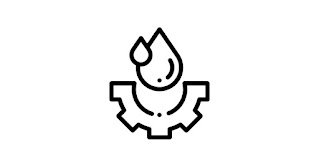1. Centre of buoyancy always
a) coincides with the centre of gravity
b) coincides with the centroid of the volume of fluid displaced
c) remains above the centre of gravity
d) remains below the centre of gravity
Ans: b
2. If the weight of a body immersed in a fluid exceeds the buoyant force, then the body will
a) rise until its weight equals the buoyant force
b) tend to move downward and it may finally sink
c) float
d) none of the above
Ans: b
3. Metacentric height for small values of angle of heel is the distance between the
a) centre of gravity and centre of buoy-ancy
b) centre of gravity and metacentre
c) centre of buoyancy and metacentre
d) free surface and centre of buoyancy
Ans: b
4. A floating body is said to be in a state of stable equilibrium
a) when its metacentric height is zero
b) when the metacentre is above the centre of gravity
c) when the metacentre is below the centre of gravity
d) only when its centre of gravity is below its centre of buoyancy
Ans: b
5. The increase in meta centric height
i) increases stability
ii) decreases stability
iii) increases comfort for passengers
iv) decreases comfort for passengers
The correct answer is
a) (i) and (iii)
b) (i)and(iv)
c) (ii) and (iii)
d) (ii) and (iv)
Ans: b
6. A rectangular block 2 m long, 1 m wide and 1 m deep floats in water, the depth of immersion being 0.5 m. If water weighs 10 kN/m3, then the weight of the block is
a) 5kN
b) lOkN
c) 15 kN
d) 20 kN
Ans: b
7. The point in the immersed body through which the resultant pressure of the liquid may be taken to act is known as
a) center of gravity
b) center of buoyancy
c) center of pressure
d) metacentre
Ans: c
8. If a vessel containing liquid moves downward with a constant acceleration equal to ‘g’ then
a) the pressure throughout the liquid mass is atmospheric
b) there will be vacuum in the liquid
c) the pressure in the liquid mass is greater than hydrostatic pressure
d) none of the above
Ans: a
9. When a liquid rotates at a constant angular velocity about a vertical axis as a rigid body, the pressure intensity varies
a) linearly with radial distance
b) as the square of the radial distance
c) inversely as the square of the radial distance
d) inversely as the radial distance
Ans: b
10. An open cubical tank of 2 m side is filled with water. If the tank is rotated with an acceleration such that half of the water spills out, then the acceleration is equal to
a) g/3
b) g/2
c) 2g/3
d) g
Ans: d

